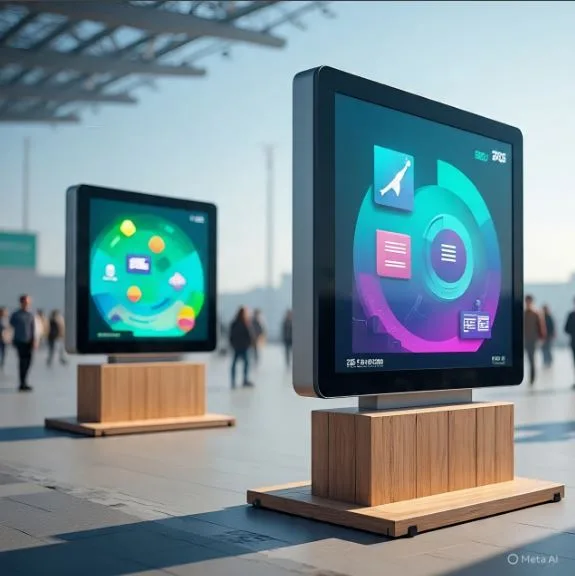Top 3 Alternatives to Uizard.io in 2025
Uizard.io has become a popular AI-powered design platform for creating UI mockups, wireframes, and prototypes with extraordinary speed. Its focus on text-to-design generation and sketch-to-UI conversion makes it one of the most accessible tools for both designers and non-designers. But in 2025, the landscape of AI design tools has exploded, and several alternatives now offer stronger capabilities depending on your workflow.
Below are three of the best Uizard.io alternatives, including Bolt AI, each offering unique strengths for designers, developers, and product teams.
- Bolt AI — For End-to-End App + UI Generation
What It Is
Bolt AI is an AI-driven development and design platform that allows users to build complete web applications using natural language. Instead of only generating mockups, it creates full UI structures, app logic, and exportable source code. It bridges the gap between rapid prototyping and production-ready development.
Why It’s a Strong Alternative to Uizard.io
BoltAI goes beyond design. It can generate the UI layout, components, backend logic, and database structure based on a single written prompt. This means you can go from idea to a working prototype dramatically faster than with traditional design tools.
Its visual editor also allows you to update layouts and make design changes using an intuitive interface. Because the platform provides access to the generated source code, you retain full control of the project and can deploy or extend it as needed. This makes BoltAI ideal for startups and teams who want more than static wireframes.
Another unique advantage is that BoltAI can work with multiple AI models in certain configurations, giving users flexibility instead of locking them into a single provider.
Where Bolt AI Falls Short
- Bolt AI is not a dedicated design tool like Uizard, so users focused purely on high-fidelity design might find it less specialized.
- Its automatically generated UI may require manual refinement for pixel-perfect results.
- Although no coding is required, some understanding of how web apps work helps users get the most out of the tool.
Best For
- Founders building MVPs
- Non-technical teams who want working prototypes
- Developers looking for AI-generated scaffolds
- Anyone wanting UI + functional code rather than just design mockups
- UX Pilot AI — For UX-Focused Design Flows and High-Fidelity UI
What It Is
UX Pilot AI is an AI-powered UX and UI design platform focused on producing wireframes, user flows, design systems, and polished high-fidelity screens. It streamlines the UX process from ideation to prototype and supports both design research and interface creation.
Why It’s a Great Alternative to Uizard.io
UX Pilot excels at generating structured, UX-driven outputs. Instead of only creating a single screen or mockup, it produces cohesive screen flows, layout variations, and design patterns. You can start with a text prompt, sketch, or reference image, and the AI will generate multiple wireframe or UI options to choose from.
The platform offers tools to create high-fidelity UI screens, user journeys, sitemaps, and even UX research materials like interview questions or personas. For teams working in iterative design phases, this all-in-one UX support can significantly speed up concept development.
One of its core strengths is its ability to export to Figma, making it compatible with existing professional design workflows. It also generates frontend-friendly design code, assisting with smoother developer handoff.
Where UX Pilot Falls Short
- Credit-based pricing may be limiting for heavy design workloads.
- Some high-fidelity designs may require manual adjustments for production use.
- As with any AI design tool, prompt clarity directly affects the output quality.
Best For
- UX designers and product teams
- Startups needing end-to-end UX workflow support
- Non-designers who want polished UI quickly
- Teams working in Figma
- Stitch by Google (formerly Galileo AI) — For Text-to-UI with Production Code
What It Is
Stitch is Google’s AI-powered UI generator designed to convert natural language prompts into polished interfaces and front-end code. Emerging from formerly Galileo AI concepts, it focuses on bridging the gap between design and development by producing both visual layouts and real code.
Why It’s a Powerful Alternative to Uizard.io
Stitch can generate UI from a description, a sketch, or a reference image. It doesn’t just create a visual mockup—it produces multiple design variants, enabling teams to explore different styles quickly. For developers, one of the most compelling features is code export. UI components can be generated in formats suitable for modern web development, making the handoff process far faster than traditional design workflows.
The tool also allows for theme customization, letting users specify visual direction such as minimalist, dark mode, or brand palette. With Google backing the platform, it benefits from strong AI research, rapid iteration, and future integration with Google’s ecosystem.
Where Stitch Falls Short
- It is still relatively new and evolving, so some advanced features may feel experimental.
- Generated designs often need refinement in a design tool afterward.
- Learning how to prompt for precise UI or code can take practice.
Best For
- Developers who want UI + code together
- Designers who want multiple style variants quickly
- Teams building prototypes that move toward production
- Users already working with Figma
Conclusion
Uizard.io remains one of the fastest AI prototyping tools—but depending on your goals, these alternatives may suit you even better.
- Bolt AI is best for users who want not just UI, but a functioning application that can be deployed or expanded.
- UX Pilot AI is ideal for teams focused on UX structure, user journeys, and polished UI screens that plug into established design workflows.
- Stitch by Google stands out for combining design with production-ready code, making it a strong choice for hybrid designer-developer workflows.





